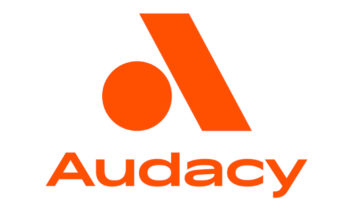SEOUL, South Korea — Helping to keep a radio station on-air at all times is not an easy job anywhere, but in Seoul, a city that has developed and expanded dramatically over the past 20 years, there are additional problems to be “thought around.”
Jeon Jong-Ik, a broadcast engineer for Seoul Broadcasting System, explains: “These days we’ve found it’s becoming more difficult to send our signals to the transmitter by microwave link because in Seoul there are a lot of tall apartment buildings, which interfere with the signals. So we’ve had to keep migrating our microwave links to taller buildings.”

SBS Engineer Jeon Jong-Ik SBS operates two radio stations, Love FM and Power FM, along with several TV channels. It has nine regional offices throughout Korea.
To deal with the croweded skylines, SBS recently bought Comrex Access IP codecs, and this has helped solve at least one problem.
Said Jeon, “Since we have 3G communications in Korea, we can now transfer data to our headquarters using IP protocols, while keeping our old microwave equipment for backup. With IP, it is easy to send the data to, or from, the studios.”
SBS uses both the SK Telecom and KT 3G networks.
“The Comrex 3G equipment is very easy to use and of course the audio quality is significantly better than with a mobile phone. If a reporter needs to do a live report from the street, they simply connect the codec to the 3G interface and the microphone, and they can then transmit their reports in high-quality audio direct to the studio, via the mobile network.”
The equipment supports up to 15 kHz bandwidth links.
“The quality of the audio depends on the quality of the codec’s coding algorithm. The equipment supports a lot of algorithms, including MPEG-4 HE-AAC,” Jeon said.
SBS has five sets of codecs and uses two for transmitting mobile data, and the other three for sending broadcast signals to the transmitter site.
Field reporting
SBS reporters are also using HHB DRM85 FlashMics, which record MP3/MP2/WAV files to flash memory housed within the microphone body. At the bottom of the mic are a USB and a headphone socket with a record and playback switch.
“Of course,” saud Jeon, “as it records to flash memory, there is no fast forward — no cue and review. But the fact that the recordings are data files means we can transfer the data very quickly, which is important when you are editing an interview for the news.”
Jeon said the four FlashMics have mostly replaced the MP3 and MiniDisc recorders SBS reporters previously used, although they do still record some events to DAT tape.
“Those [the DAT recorders] record at high quality, but they’re relatively large and need power, so we tend to use them in static situations. The HHB mics are good for going out and about and interviewing busy people.”
In the studio, SBS is revamping its working methods, in part to improve audio quality by shifting from MP2-encoded audio files to uncompressed WAV files.
“Programs or CDs get recorded onto a central server, with broadcast playout from there. Total storage space currently is 13 TB, which is not very big, actually, but we are changing our current audio file format from MP2 to WAV files. With uncompressed WAV files four to five times the size of MP2, we have to enlarge our storage capabilities,” said Jeon.
“We want to have even better audio quality, because in another couple of years digital radio will be upon us, so we are conducting a review of our capabilities to enhance our audio quality.”
As part of the reencoding process, SBS is going back to its original CDs to rerip the music as WAV files and then copying them to the central server.
“It is a very big job,” said Jeon, “and it will cost a lot because there are masses of CDs to copy all over again. But even though some of the CDs may be dusty or scratched, the software can check for any errors, and automatically fix them.”
Visual radio
Another new development for SBS lets listeners say, “I saw it on the radio.”
Jeon explained, “In Korea, we have T-DMB for mobile television, but we are doing Visual Radio using DAB.” T-DMB and DAB are both based on the Eureka-147 standard and many receivers can handle both T-DMB video and DAB audio broadcasts.

MOT Slideshow on DAB is being used by SBS to provide listeners with weather, left, and traffic information. “We changed the service type because Koreans want to be able to see visual data on their digital radios. DAB can send text data and small picture data, but with Visual Radio, using the MOT Slideshow technique, also based on DAB standards, we have changed the service type to be able to send ‘slide data’ like JPEG pictures. We believe this service has good promise.”
SBS has experiemented with other video options, such as always-on cameras in the on-air studios, but with mixed success.
“With a video camera in the studio, listeners could see still pictures of the DJ grabbed from the video feed. It sounded like a good idea — at first — but actually it didn’t turn out to be very successful,” said Jeon.
“As the data rate is low, and also you don’t know when the frame will be grabbed, sometimes the freeze-frame can be of the DJ with his mouth open, for instance, if he is talking. That doesn’t look very good, and many of the DJs didn’t like to have a camera watching them. So we don’t do that any longer.”
Instead, SBS provides text data and news headlines, along with information about pop stars, as part of its stream.
“Sometimes we show traffic information shown on a simple map. That is helpful,” Jeon said. “But webcams in the studio — I don’t think it was a particularly useful service for our listeners.”











